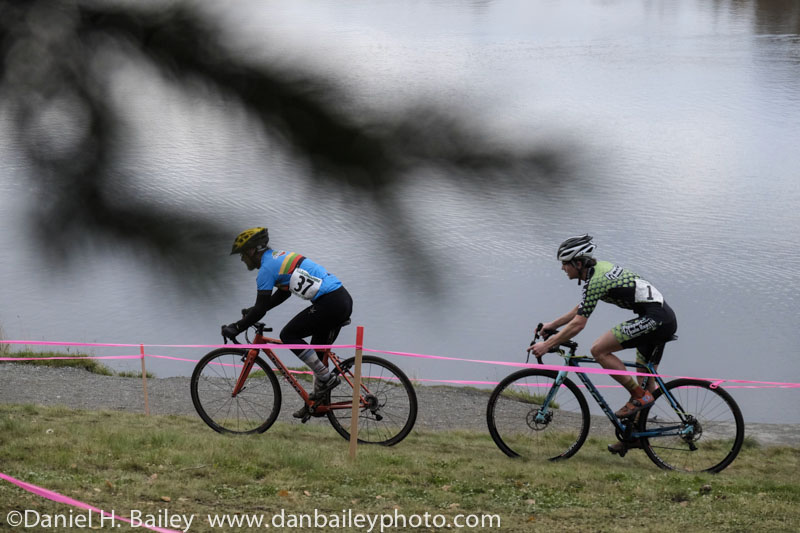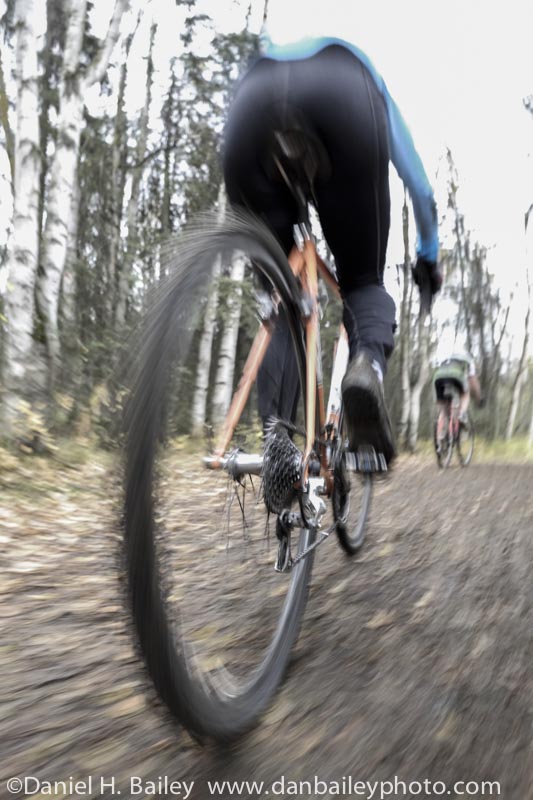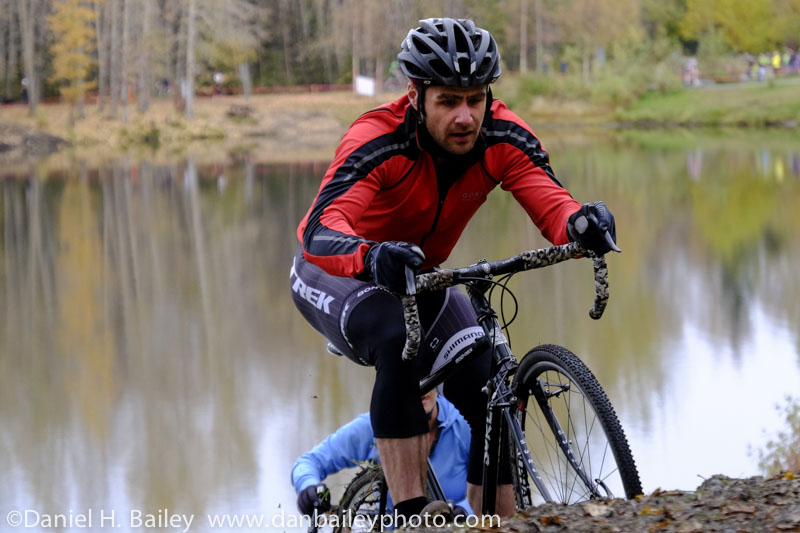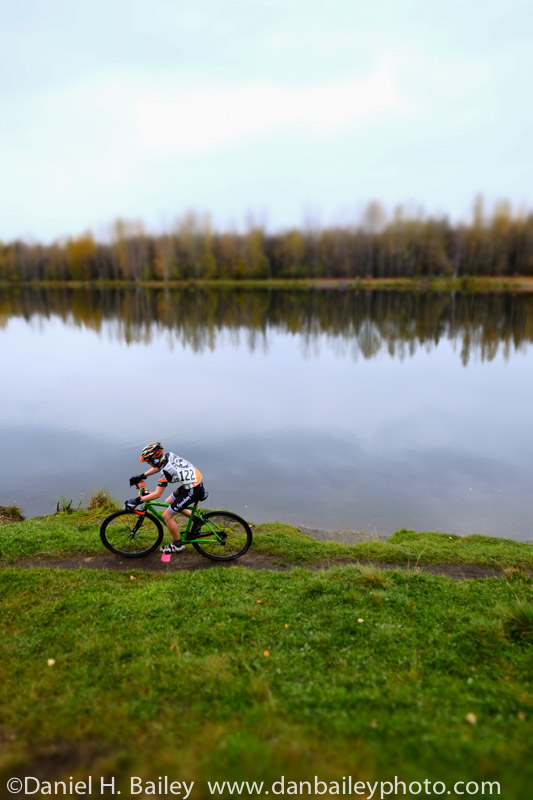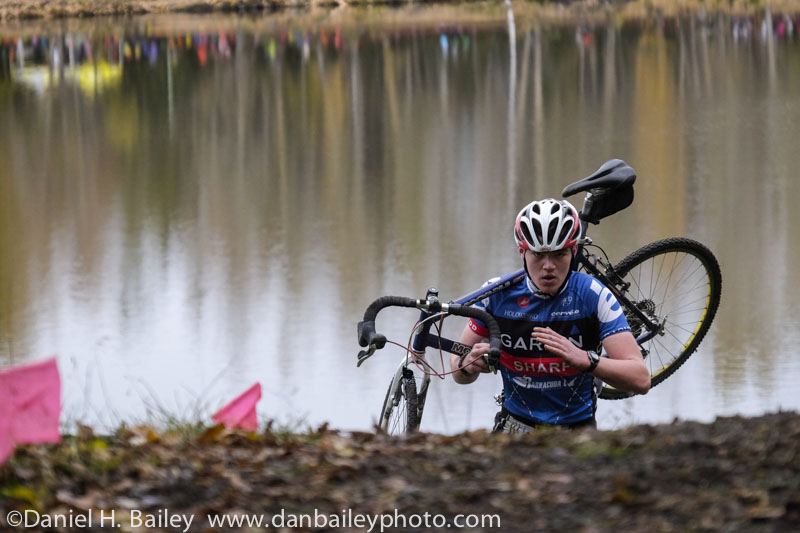 Of all the action subjects that I tackle, cylcocross racing is one of my favorite sports to shoot. In some ways it’s easy. Being a circuit course with roughly an hour of laps, I can camp out at great spot and shoot lots of racers, which gives me plenty of opportunity to practice different creative approaches, try out different lenses and dial in my settings. Plus, it’s not just riding. With all the technical sections, there are some great expressions and compositions to be had.
Of all the action subjects that I tackle, cylcocross racing is one of my favorite sports to shoot. In some ways it’s easy. Being a circuit course with roughly an hour of laps, I can camp out at great spot and shoot lots of racers, which gives me plenty of opportunity to practice different creative approaches, try out different lenses and dial in my settings. Plus, it’s not just riding. With all the technical sections, there are some great expressions and compositions to be had.
In other ways, though, it’s quite challenging. Cyclocross is a sprint race, which forces me to frame my shots in an instant or I lose the moment. And, since I shoot multiple races each season, it’s constant work to come up with new ideas so that I don’t just shoot the same types of shots race after race. During the past couple of years, I’ve varied my approach with different gear, formats, in-camera film simulations, and even by experimenting with my processing techniques.
In addition, shooting this kind of sport really tests your gear. Having shot extensively with the Fuji X-T1 all year, I’ve been looking forward to using it during cyclocross season. After all, Fuji designed the X-T1 to be a full-on action camera, and what better way to put it to the pro test by shooting stuff like this?
Of course, you can use any cameras to shoot sports and action, it just takes practice and familiarity with your gear. If you don’t use Fuji gear, you can follow along and apply what I say to your own setup. Remember, the best camera for shooting action is the one you have around your neck that day.
My benchmark for shooting this kind of action has been my Nikon gear; that’s what I’ve mostly used in the past. Nikon autofocus is top rate and their pro quality glass is fast and tack sharp. I’ve always loved using the Nikon stuff, but the weight savings that mirrorless gear offers is hard to ignore. At the same time, it’s a moot point if the gear doesn’t perform. That’s the bottom line for any camera. Does it let you do what you want or does it hold you back?
Since I have a good reference point from which to judge a camera’s performance with this kind of subject, I know exactly what the X-T1 is going to have to do in order to stand up to my DSLR equipment.
Essentially, it has to acquire and track very fast moving riders, the lenses have to give me sharp photos with little noise, and the EVF has to allow me the creativity to compose my images with uninhibited clarity, just as if I was using a pentaprism viewfinder.
When it comes to AF, I’ve found is that the X-T1 does an amazing job, even with something as quick as this. Some lenses are better than others, but overall, the X-T1’s autofocus system works just as they promised it would.
Using single shot and continuous slow modes, you can compose around any one of the 49 AF points in the viewfinder, which offers incredible creative options. I like to place my subjects in different areas around the frame. Using continuous high mode, the camera uses the 9 points near the center, although from my experience, I’ve found that it will track all the way through the frame, even if the subject leaves this central area.
During the past couple of weeks, I’ve been using only the new XF 18-135mm f/3.5-5.6 weather sealed lens. I’m so impressed with this lens, and even though it’s somewhat slow with regards to maximum aperture, the linear AF motor is exceptionally fast. (Read my full review of this lens here.)
The zoom range on the XF 18-135mm gives you a decent and very usable of focal lengths from relatively wide angle to telephoto. On the long, it’s as long as I’d usually need for a sport like this, especially considering that cyclocross is largely run under the shady canopy of forest trails.
In low light conditions, it’s a little bit limiting. I shot last weekend’s race at ISO 2000 in order to ensure that I got tack sharp imagery. There’s definitely some grain, but it’s not so bad that it detracts from the overall feel of the photo. With f/2.8 glass, I could have dropped the ISO down to around 1000 or below, which would make a difference, but of course, I’d sacrifice weight. f/2.8 lenses are quite a big bigger.
Also, I shot some of these using Fuji’s Velvia film simulation, which is pretty contrasty. Some of the noise is due to my brightening them up in post. In these kinds of conditions, Velvia isn’t the best choice, so halfway through the race, I switched to Pro Neg Std., which I LOVE. It makes beautiful looking images with great colors, and lower, softer contrast. Although super bright colors can look great, sometimes going a little bit muted can give you some very nice results. Not everything has to have tons of contrast.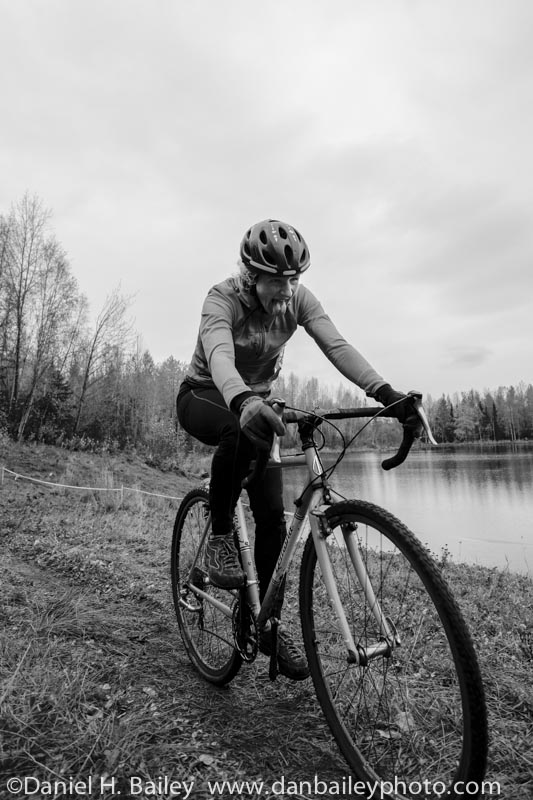
I also love using the built-in BW film sims and even some of the Advanced shooting modes that Fuji includes on all their X cameras, like Miniature. Between all of the options, there have plenty of tools to stretch your creativity. I like making those kinds of on-the-spot decisions, I just pick one and go. Sure, the flexibility and control of shooting in RAW can be advantageous, but sometimes it’s just nice to go with a look and let it be.
Still, I love going wide, so for this week’s race, I also brought along the XF 14mm f/2.8 ultra wide angle lens. This is an absolutely killer piece of glass, it’s sharp, fast, it has solid construction and a wonderfully wide view without going overboard. I feel that it portrays subjects with confident authority, and it lets you get in just a little bit more environment to help flesh out the story of your scene. (Read my full review of the Fuji 14mm lens here.)
I was excited about the creative variation that this week’s race offered me. For some scenes, I was able to hone in tightly on a rider and get the in-your-face feel of action and expression; for others, I backed off and tried to show some of the greater scene.
One thing I like to do is vary my focus point. Although you usually want to show the main subject as the sharp element, but sometimes you can change things up and lock in on a different element of the frame and let your viewer’s eye wander. They’ll start at the point of sharp focus, but then work their way towards the subject. This makes your viewer work that much harder, which isn’t a bad thing.
Add to that, things like panning, slow shutter speeds, changing up your vantage point, and you have a comprehensive bag of tricks that you can use for shooting any kinds of sports and fast breaking subject matter. More than anything, though, it just requires quick, decisive action on your part. Hesitate and you’ll lose the shot. More than anything, what matters is moment. Nail it and you’ve done your job.
Of course, the real fun part of shooting cyclocross is that when I’m done photographing the first heat, I get to race myself! All in all, it’s a complete workout: an hour of creative practice and work, followed by an hour of total, all out, heart pounding, lung busting, leg burning exertion.
I love Saturdays in the fall!!
Click here to see more juicy images from this race.
